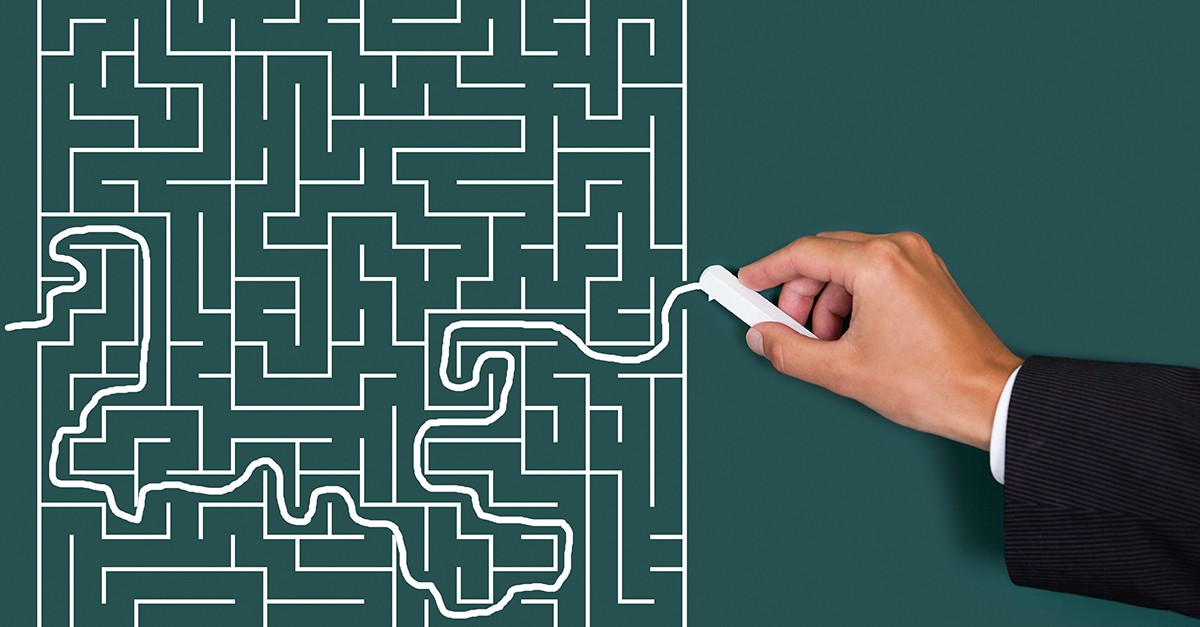
Buying a Spanish property can be like finding your way through a maze, but not with this guide / Gtres
Everyone knows how much of a headache buying a house can be, even if it’s your first time… especially if it’s your first time! Always ready to lend a helping hand, idealista guides you through the 12 simple steps to follow to buy a house in Spain.
- Sort your budget: First things first, you have to know how much you can feasibly spend on purchasing your new Spanish property and how much you’ve got saved up already. If you’re calculating it based on your monthly earnings, your budget should not exceed 35%-40% of your net monthly income.
- How will you pay? There are a number of options when it comes to paying for your house:
- One-off payment: Paying the total sale price of the property outright to the seller, normally by way of a bank cheque in their name that you hand over when you sign the property deed.
- Mortgage loan: Getting a mortgage, either from the bank in Spain or at home, using the property itself as a guarantee against defaulting. Depending on how old you are and certain other circumstances, payment terms can be up to 40 years, with banks normally offering to loan 80% of the value of the house and the remaining 20% being paid from the buyer’s pocket.
- Mortgage subrogation: Changing the name of the debtor on an existing mortgage on the property to your own name, taking on all the rights and responsibilities of it and making you the new payer of the mortgage. This must be requested from the same banking entity as the mortgage already exists with. One advantage of subrogating a mortgage is that you save yourself all the costs of a new mortgage, but on the other hand, the terms and conditions are fixed and you cannot adapt them to meet your needs.
- Decide what type of property you want and where, be it a new construction or second-hand, free or protected, on the seafront or in a city. You should choose the one that best suits your needs and personal situation.
- Choose a seller. Once you’ve decided where to buy and how much to spend, your search will be so much more focussed and productive. Remember that negotiating the price and sale conditions depend on the type of seller, so choose wisely between a private seller, a real estate agency, property developers or banks, because each have their own pros and cons.
- Visit the property, talk to the neighbours and inspect the place top to toe. When you go to visit a place, take notes, check measurements and take photos of anything that takes your fancy. Take in the distribution of the space and the rooms, which direction the property faces, how much light and ventilation there is, the state of the fixed installations, the wiring and the energy performance, how much noise there is and what else is around in the neighbourhood… in short, be thorough in your first visit to see a house!
- Make an offer (they can’t refuse):
- Take a trip to the Property Registry to find out all the details of the property and adjust your offer accordingly.
- Make sure you’ve got your mortgage in place to be able to make that offer.
- Look over the property once more, just to be sure, before making your offer.
- Sign the deposit agreement (contrato de arras). This is the first contract that is normally signed and it’s a kind of preliminary safeguard for the rights of both the buyer and the seller, assuring both will enter into the sale agreement. When you sign, you’ll have to pay a 10% deposit on the house, and with this you take on all the rights and responsibilities of a buyer. If you as the buyer later decide not to go through with the transaction, you will lose this deposit but if the seller cancels the sale to you, they will have to return the deposit to you.
- Sign the title deed. This part of the buying process must be done in front of a notary with both the buyer and seller present. The deed must contain a description of the property as well as explaining any mortgages or charges on the house, the final sale price agreed and how it will be paid, plus the taxes and expenses related to the sale. This is also a great chance to check that all the documents are present and correct, like the Energy Performance Certificate, insurance if applicable, and invoices for the latest tax and community cost payments.
- Pay the transaction costs and taxes. The main expenses to be paid when buying a home in Spain are the ITP property transfer and VAT taxes, capital gains tax, notary costs, the payment to register your name on the Property Register and any costs related to the mortgage.
- Change the name on the energy, water and gas bills. The energy companies and any other services providers should be notified that you are the new owner and will be paying the bills from now on.
- Keep all the documents. Put them in a safe place and don’t lose anything! You never know when you’ll need them again.
- Pick up the keys and move in to your brand new home!